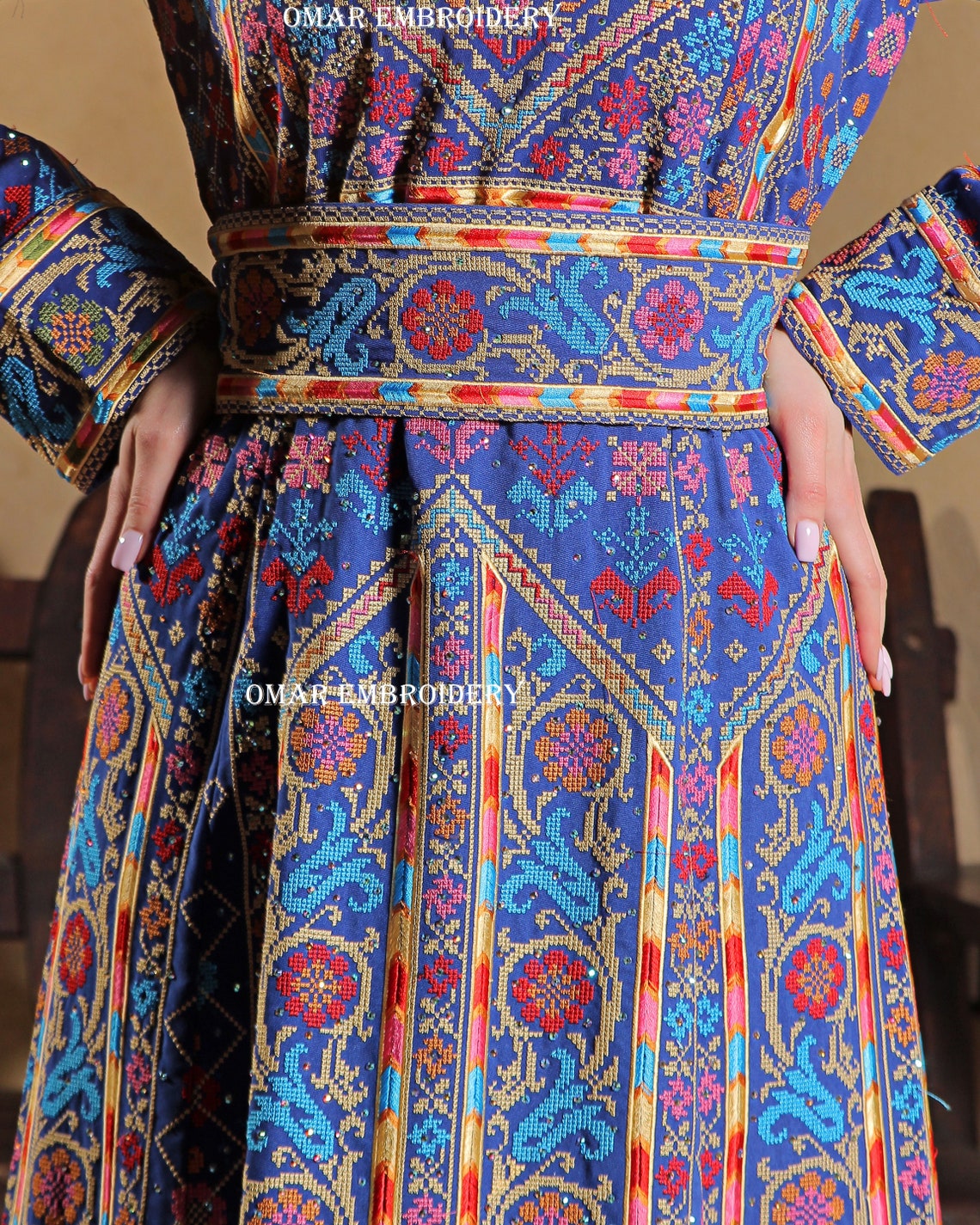La broderie palestinienne, ou tatreez, est pratiquée depuis des siècles. Cette technique est souvent utilisée pour orner des vêtements, des textiles ménagers et d'autres objets du quotidien.
Historique
Technique
Le tatreez fait grand usage de la couleur.
Le tatreez de Bethléem est particulièrement réputé.
Signification et importance
Le tatreez est un art féminin dans la culture palestinienne. Les brodeuses et leurs œuvres mobilisent ainsi des enjeux politiques qui leur sont propres, à l'intersection particulièrement du féminisme et de la lutte pour l'émancipation palestinienne.
Promotion et préservation
Différentes initiatives existent pour préserver, transmettre et célébrer le tatreez, dont celles de Wafa Ghnaim et de Zain Masri. Le tatreez a été inscrit au patrimoine mondial de l'humanité en 2021.
Références
Bibliographie
- Isabelle Hesse, « Embroidering Palestine: Tatreez, cultural resistance, and female labour in Palestinian American graphic narratives », Textual Practice, vol. 0, no 0, , p. 1–24 (ISSN 0950-236X, DOI 10.1080/0950236X.2023.2243912, lire en ligne, consulté le )
- Laura Lamberti, « Palestinian Embroidery, Collective Memory and Land Ownership », Palestine - Israel Journal of Politics, Economics, and Culture, vol. 25, nos 1/2, , p. 185–188 (ISSN 0793-1395, lire en ligne, consulté le )
- Raja Abdulrahim, « The Threads of Identity in a Palestinian Craft », The New York Times, (ISSN 0362-4331, lire en ligne, consulté le )
- Cat Woods, « Wafa Ghnaim’s ‘Tatreez Inheritance’ Showcases the Richness of Palestinian Embroidery », Observer, (lire en ligne, consulté le )
- Rachel Dedman, « The Politicisation of Palestinian Embroidery Since 1948 », dans Dangerous Bodies: New Global Perspectives on Fashion and Transgression, Cham, Springer International Publishing, coll. « Palgrave Studies in Fashion and the Body », , 97–116 p. (ISBN 978-3-031-06208-7, lire en ligne)
- Hagar Salamon, « Embroidered Palestine: A Stitched Narrative », Narrative Culture, vol. 3, no 1, , p. 1–31 (ISSN 2169-0235, DOI 10.13110/narrcult.3.1.0001, JSTOR 10.13110/narrcult.3.1.0001, lire en ligne, consulté le )
- Maki Yamamoto et Yoshiko Kawabata, « The history of Palestinian embroidery and current situation of Palestinian territories », 沙漠研究, vol. 32, no S, , p. 303–311 (DOI 10.14976/jals.32.S_303)
- Jeni Allenby, « Re-inventing cultural heritage: Palestinian traditional costume and embroidery since 1948 », Textile Society of America Symposium Proceedings,
- Belal Herbawi, Abhishek Chatterjee et Heitor Alvelos, « Embroidered heritage: a design-led visual ethnography of traditional Palestinian motifs », dans Connectivity and creativity in times of conflict, Academia Press, (ISBN 978-94-014-9647-6, lire en ligne)
- Moon-Sook Kim et Shin-Ae Moon, « A Study on the Embroidery of Palestinian Costume », The International Journal of Costume Culture, vol. 3, no 2, , p. 161–174 (ISSN 1229-2761, lire en ligne, consulté le )
- Reem Farah, « Heritage is to Art as the Medium is to the Message: The Responsibility to Palestinian Tatreez », Third text, (ISSN 1475-5297, lire en ligne, consulté le )
Voir aussi
Liens externes
- Projet Tirazain, archive de motifs en ligne
- Institut du tatreez
- Portail du textile
- Portail de la Palestine
- Portail du patrimoine culturel immatériel
- Portail des femmes et du féminisme




